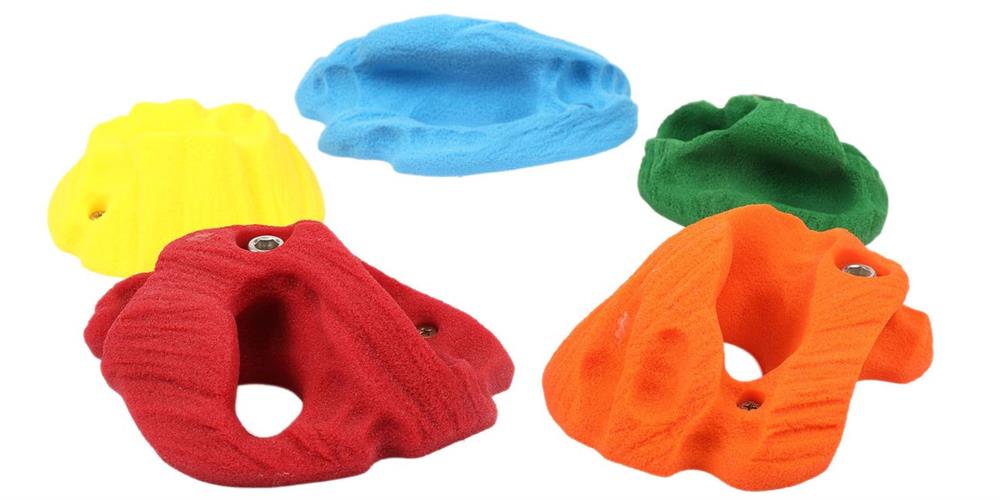Climbing walls are a gateway to adventure, providing an exhilarating experience right in the comfort of your home. However, as is the case with any hobby tools, these walls require regular upkeep to ensure safety and longevity. Use this guide to learn how to maintain your residential climbing wall and ensure it remains in top shape.
Conducting Regular Inspections
Regular inspections are the backbone of maintenance, and your climbing wall will be in better shape with your watchful eye. Establish weekly and monthly inspection schedules to catch issues before they become major problems.
During these inspections, pay close attention to signs of wear and tear. Look for any loose bolts, worn-out holds, or signs of structural damage. Address these concerns to ensure a safe and enjoyable climbing experience.
Cleaning Techniques for Holds
Cleaning your climbing holds is essential for maintaining grip and hygiene. Different cleaning solutions are available, but it’s important to choose one that is safe for the material of your holds.
Harsh chemicals deteriorate the climbing holds and cause them to become rough or smoothed down, making climbing more challenging. Mild soap and water are often sufficient for routine cleaning. For tougher grime, consider a vinegar solution or specialized climbing hold cleaner.
The cleaning process is straightforward:
- Remove the holds from the wall using a wrench.
- Soak them in a cleaning solution and scrub them with a soft brush to remove dirt and chalk buildup.
- Rinse thoroughly and allow them to dry completely before reattaching.
Regular cleaning improves grip and extends the life of your holds. Consider using a toothbrush to reach tight spaces for holds with intricate designs, such as rock-climbing pocket holds. Use these cleaning techniques to create a more enjoyable climbing experience and preserve the longevity of your equipment.
Surface Maintenance Tips
Maintaining the surface of your climbing wall is crucial for safety and longevity. After multiple people use the wall, check for surface damage, such as cracks or chips.
While the rock-climbing wall is extremely durable, it’s possible that the constant weight of people and the stepping of shoes may begin to show on the surface. Small imperfections may grow over time and compromise the wall’s integrity. Promptly addressing these issues will prevent further deterioration.
Repair cracks or chips with appropriate filler materials that match the wall’s construction. Sand the area smooth once the filler has dried to ensure a seamless surface. Regularly applying a protective finish or sealant will help protect the surface from wear and tear, especially in outdoor settings.

Safety Checks and Balancing Holds
The holds are the most notable feature of your rock climbing wall. Loose or improperly balanced holds lead to accidents and injuries.
Regularly check the tightness of bolts and fix any wobbly holds using a wrench. A secure hold provides a stable grip, boosting safety and confidence during climbs.
Balancing hold placement is equally important. Test hold positions to ensure they have strategic arrangements for a safe and challenging climbing experience. Place enough weight on each hold once you finish tightening them.
When adjusting holds, consider the route’s difficulty, available space, and user skill level. A well-balanced setup enhances the overall climbing experience and reduces the risk of falls.
Updating Climbing Equipment
Regularly update your climbing equipment to make maintenance safer and easier to perform. Over time, holds wear out, losing their texture and grip. Replacing worn-out holds with new ones improves climbing quality and reduces the risk of accidents.
When upgrading to new climbing features, choose options that match your skill level and goals. Consider adding unique holds with different shapes and textures to diversify your climbing experience.
Sjop for new holds of various shapes, sizes, and textures at Atomik Climbing Holds, and customize your climbing wall with the holds that make your experience exhilarating. New features reignite your passion and challenge your abilities, keeping the climbing experience fresh and exciting.
Maintaining the Climbing Wall Structure
Structural integrity is paramount for a safe climbing wall. Regularly check the framework and support beams for signs of wear or weakening. Depending on your climbing wall, you may need to look for rust, corrosion, or wood rot.
Reinforce weak spots with additional support as a proactive measure to enhance safety. Consult with our professionals to ensure your climbing wall meets safety standards. Investing in the structural integrity of your wall provides peace of mind and allows for more adventurous climbs.
Seasonal Maintenance Strategies
Seasonal changes impact the condition of your climbing wall, especially if it’s outdoors. Preparing for weather changes is essential to maintain its integrity. Inspect the wall before winter to spot any vulnerabilities to freezing temperatures, such as cracks or moisture-prone areas.
Conduct a thorough inspection in spring to address any issues caused by winter weather. Clean and reapply protective finishes as needed, and use a protective cover for expected rain.
Managing Chalk Buildup
Chalk is a helpful resource that makes climbing easier on your hands. Chalk buildup is a common issue for climbers, affecting performance and aesthetics.
As more people climb the wall and use chalk to enhance their grip, the residual amount of the material remains on hold and reduces friction. Holds with chalk buildup become too powdery to grip and may cause someone to fall. Regular cleaning methods for chalk removal include brushing holds with a soft brush and using a damp cloth to wipe surfaces.
Encourage proper chalk usage among climbers to limit future buildup. Educate them on the benefits of using less chalk and provide guidelines for application.

Inspecting Safety Gear and Accessories
Safety gear is a critical component of climbing wall maintenance. Regularly evaluate ropes, harnesses, and mats for signs of wear or damage. Replace any unsafe gear promptly to maintain a secure climbing environment.
Check harnesses for fraying or damaged stitching that could release someone mid-climb. Inspect ropes for cuts, abrasions, or weak spots. Double-check knots attached to the harness and ensure they are tight and prepared for more tension.
Make maintenance easier on yourself by encouraging climbers to perform pre-climb safety checks and educating them on proper gear usage. Prioritize safety gear maintenance to foster a culture of safety and responsibility within your climbing community.
Documenting Maintenance Activities
While performing the above tasks is essential for proper maintenance, keeping a maintenance log is a valuable practice that helps track repairs and updates. Document maintenance activities to address issues promptly and provide a historical record of wall upkeep. This information is useful for identifying recurring problems and implementing preventive measures.
A maintenance log should include inspection dates, identified issues, repairs made, and equipment replacements. Regularly reviewing the log helps anticipate future maintenance needs and allocate resources efficiently. In addition to tracking repairs, consider noting feedback from climbers and any adjustments made based on their input.
Maintaining your residential climbing wall is essential for safety, enjoyment, and longevity. Conduct these maintenance practices to ensure a top-notch climbing experience. Prioritizing structural integrity, seasonal maintenance, and safety checks further enhances the reliability of your wall.
Remember, a well-maintained climbing wall provides endless adventures and reflects your dedication to the sport. With consistent care and attention, your climbing wall will continue to inspire and challenge you for years.




Leave your comment